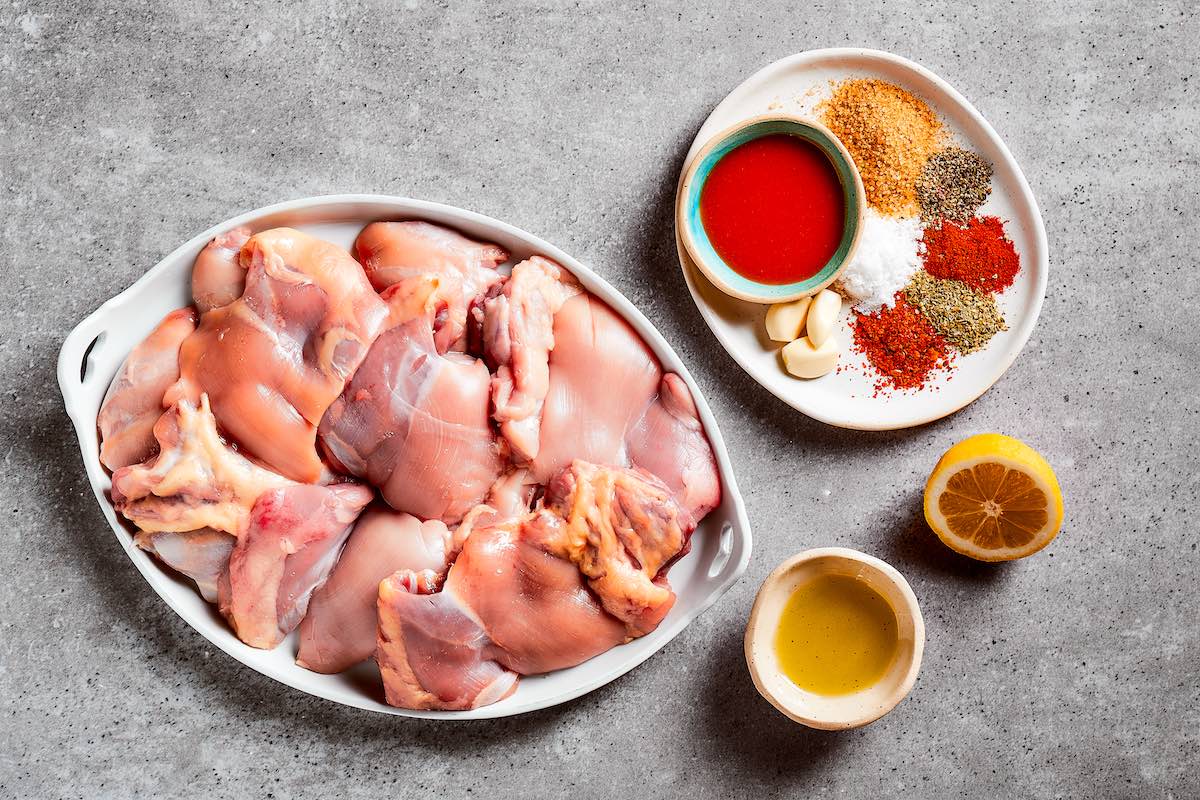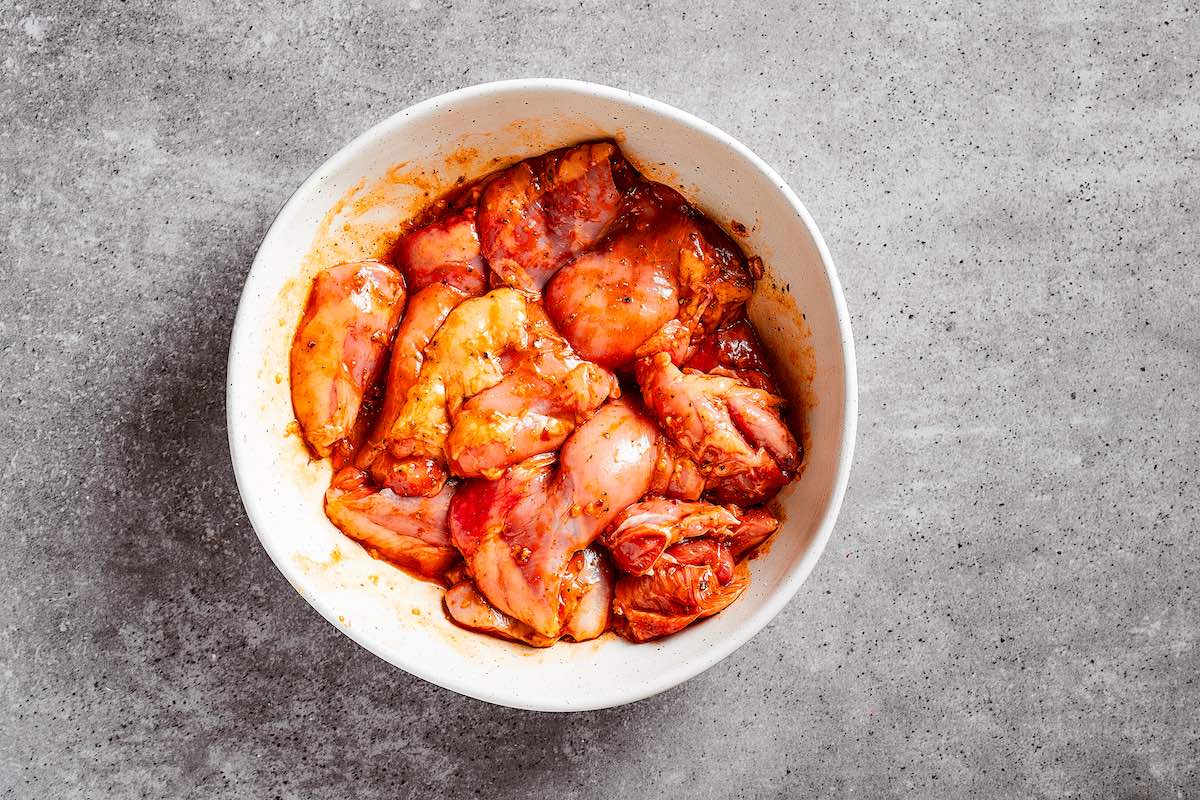Piri piri chicken has exploded in popularity in recent years, captivating tastebuds around the world with its irresistible blend of heat and flavor. But what exactly is this dish that has people lining up for more? In this article, we’ll take an in-depth look at the origins, ingredients, preparation, and variations of piri piri chicken to understand why it has become such a phenomenon
A Spicy History
Piri piri chicken originates from Portuguese and Mozambican cuisines in southern Africa. The name “piri piri” comes from the Swahili term for a tiny but extremely spicy chili pepper that gives the dish its signature heat. These peppers were brought to Africa by Portuguese colonizers and rapidly incorporated into local cuisines. Chicken marinated and cooked with piri piri peppers became a hit, evolving into a staple street food in countries like Mozambique Angola and Portugal.
It’s All About the Piri Piri Peppers
The star of the show in piri piri chicken is the piri piri pepper itself. These small, bright red chili peppers pack a serious punch, with a Scoville rating between 50,000 to 175,000 units. That’s around the same spiciness as a habanero or scotch bonnet pepper. The capsaicin and other compounds in piri piri peppers give them their intense, burning heat that gradually builds on the palate. This sensation is what makes them so addictive in the right dish.
Crafting the Signature Piri Piri Sauce
While the peppers bring the spice, piri piri chicken gets its depth of flavor from the sauce. Traditional piri piri sauce combines the chili peppers with garlic, lemon juice, vinegar or wine, paprika, oil, and fresh herbs. The sauce marinates the chicken, allowing the acidic ingredients to tenderize it while infusing tons of flavor Piri piri sauce can also be used as a condiment for dipping or drizzling. Getting the sauce right is key to authentically delicious piri piri chicken
Succulent, Smoky, and Charred Perfection
Cooking is where piri piri chicken transforms from marinated meat to craveable cuisine. Traditionally, it’s grilled over an open wood or charcoal fire. This imparts a smoky essence while the high heat chars the exterior and locks in the chicken’s juices. The marinade caramelizes to a sticky glaze, providing sweet and spicy notes in every bite. Pan frying or baking can also yield delicious results. The goal is cooked through, succulent meat with a crispy exterior enveloped in piri piri flavor.
Fiery, But Not Always Tongue-Numbing
While piri piri chicken is known for bringing the heat, spiciness levels can vary. Some cooks tone down the chilies for milder palates, while fiery food fans may ratchet up the burn. Part of the fun is customizing the heat by adjusting chili amounts or types. So if your tongue can’t take the torched tastebuds, find a less combustible version to enjoy the flavors without the sweat-inducing spice.
Playing Well with Others: Delectable Side Dishes
A plate of piri piri chicken deserves some worthy sidekicks. Options like coconut rice, sautéed greens, or roasted vegetables balance out the heat. A cooling cucumber or tomato salad refreshes the palate between bites of smoky, spicy meat. And don’t forget the starchy accompaniments like fries, cornbread, or dipping bread to temper the flames.
Taking Flight Beyond Chicken
While chicken may be the OG protein, piri piri’s flavor profile translates deliciously to other meats. The sauce adds its addictive zing to juicy steak, fall-off-the-bone ribs, succulent shrimp, mild white fish, and more. Vegans and vegetarians can also get in on the fun with meatless alternatives like seitan “chicken” or grilled eggplant and mushrooms.
Global Appeal with Regional Roots
From its origins in Africa to popularity in Europe, piri piri chicken has expanded across borders to become a worldwide phenomenon. Nando’s restaurants have brought the dish to a mass audience with their signature peri peri chicken. But many chefs put their own spin on the classic, tweaking heat levels or adding new ingredients. At its core, piri piri chicken represents a celebration of global fusion cuisine while remaining faithful to its traditional roots.
Fiery Flavor for Every Palate
So if you’re eager to experience piri piri chicken in all its smoky, spicy glory, dive right in to find a version tailored for your tastes. This versatile dish can be mild, wild, or everything in between. Just be prepared for succulent, flavorful chicken that delivers a healthy dose of fiery African and Portuguese spirit in every tender, juicy, piri piri-coated bite.

How to make peri peri chicken
I’ve included step-by-step photos below to make this recipe easy to follow at home. For the full printable recipe instructions and ingredient quantities, scroll to the recipe card at the bottom of this post.

Step 1- Make the marinade. In a food processor or blender, blend the marinade ingredients until smooth.

Step 2- Marinate the chicken. Add the chicken to a large bowl and cover in the marinade. Refrigerate for at least an 10 minutes or overnight.

Step 3- Grill. Grease a grill pan or preheat a charcoal grill to medium heat. Once hot, add the chicken and cook for 12 minutes, turning regularly, until it reaches an internal temperature of 165F.

Step 4- Rest the chicken for a minute or two, then serve immediately with extra peri peri sauce.
Can I make this in the oven?
Yes! If you don’t want to grill the chicken, place the marinated chicken in a baking dish and bake at 375F for 15-20 minutes or until it reaches an internal temperature of 165F.
- Slice the chicken before marinating. So the flavor infuses into the meat.
- Slather on more sauce. Make extra peri peri sauce and baste it over the chicken before serving.
- Add more heat. Use serrano chilies and add more cayenne pepper, but keep in mind the dish will intensify once it’s cooked.
- Switch up the chicken. I’ve put this sauce on everything from chicken breasts to chicken wings. You can even add it to shrimp or tofu!
To store: Leftover chicken should be stored in an airtight container in the fridge for 4-5 days.
To freeze: Let the chicken cool completely, then freeze in shallow containers for up to three months.
To reheat: Microwave in 30-second intervals or in a preheated oven until warm.

This dish is known for its spiciness. However, because it is well-balanced with sweet and tart flavors, the heat doesn’t overpower the other flavors. Of course, if you don’t want things too spicy, you can use sweet red peppers and reduce or omit the cayenne pepper.
You can prepare the marinade in advance and refrigerate it for up to a couple of weeks in an airtight container.
I recommend making your sauce at home because it’s designed for this specific amount of chicmen. However, you can use the store-bought marinade and adjust the quantities as per the bottle recommendations.
Why I love this recipe
- Surprisingly easy. For how much flavor goes into this dish, it’s no more work than your basic grilled chicken.
- Easy to make ahead. Marinate as much chicken as you need up to two days in advance. The longer, the better!
- Authentic flavor. The marinade is made with simple ingredients, and when combined, it explodes with flavor. Trust me, it rivals some of the chicken I ate in Portugal!
- Healthier than the fast food version. There’s very little oil, and only a touch of sugar goes into the whole recipe. But I promise you, it tastes even BETTER than Nandos (and that is coming from a 20-year Nandos veteran!).

- Chicken. I prefer boneless skinless chicken thighs, but you can use any combination of chicken or even an entire spatchcocked chicken!
- Olive oil. To build the marinade. Alternatively, use any neutral-flavored oil.
- Lemon. For acidity. I swear by freshly squeezed lemon juice for the best results, but you can also use vinegar.
- Garlic. I prefer fresh garlic cloves, but I’ve used garlic powder in a pinch.
- Red chili. For the much-needed spice. If you’re not a fan of spicy food, skip it, or use sliced red bell pepper for no heat.
- Brown sugar. Traditional peri peri is sweet and spicy. You can also use maple syrup or agave nectar if you’d like.
- Sweet paprika. For a sweet, slightly smoky flavor.
- Dried oregano. For aroma.
- Cayenne pepper. For extra heat. Again, feel free to reduce or omit this if you want it less spicy.
- Salt. To taste.
How To Make Piri Piri Chicken With Aaron Crowder of Cervo’s
FAQ
What is piri piri made of?
What Is Peri-Peri Sauce Made From? Recipes vary, but peri-peri sauce is typically made from crushed chiles, lemon, pepper, garlic, salt, onion, bay leaves, vinegar, and oil. To make peri-peri sauce, all of the ingredients are pureed together.
What is piri piri chicken made of?
The dish is typically made by marinating chicken in a spicy mixture of piri piri chili peppers, garlic, lemon juice, and other spices, and then grilling or roasting. Overall, piri piri chicken is a delicious and flavorful dish that has a fascinating history and cultural significance.
Is piri piri spicy hot?
Yes, peri-peri sauce is indeed spicy. The level of spiciness can vary depending on the type and quantity of chili peppers used, as well as individual tolerance for heat. Bird’s eye chili peppers, the hallmark ingredient of peri-peri sauce, are known for their fiery potency.
How hot is piri piri chicken?
Though they’re only about an inch long, piri piris register between 50,000 to 175,000 units on the Scoville heat scale, which puts them at roughly 10 times spicier than jalapeños, but only half as hot as habaneros.
What is piri piri chicken?
Piri piri chicken is a dish made from chicken marinated in a spicy sauce that typically includes the African bird’s eye chili pepper, known as piri piri pepper. The marinade is made by blending these chilies with other ingredients such as garlic, lemon juice, vinegar, and various herbs and spices, creating a bold and tangy flavor profile.
How to make piri piri chicken sauce?
The lemon and salt combine to make a sweet, salty, and zesty marinade. Soak your chicken in that for 30-60 minutes and wait until they have marinated until you start on the rest of the dish. Next, we are going to make up the Piri Piri chicken sauce recipe. For this, we are mixing together the following:
Where to eat piri piri chicken?
Piri Piri chicken is a traditional Portuguese food that isn’t very common in the United States. There is a chain of restaurants called Nando’s that serves Piri Piri chicken as its signature dish. You won’t find these restaurants all over the states, though. They are only located in Chicago and Washington, DC.
What goes well with piri piri chicken?
Piri piri chicken pairs well with a variety of sides. Traditional Portuguese accompaniments include crispy fries, rice, or a fresh salad. Grilled vegetables, cornbread, or even a creamy coleslaw can also complement the heat and flavors of piri piri chicken.
Is piri piri chicken gluten-free?
The main ingredients used in piri piri chicken, such as chili peppers, garlic, lemon juice, and vinegar, are naturally gluten-free. However, it is important to double-check the specific brands of ingredients and sauces used to ensure they don’t contain any additives or gluten-containing ingredients.
